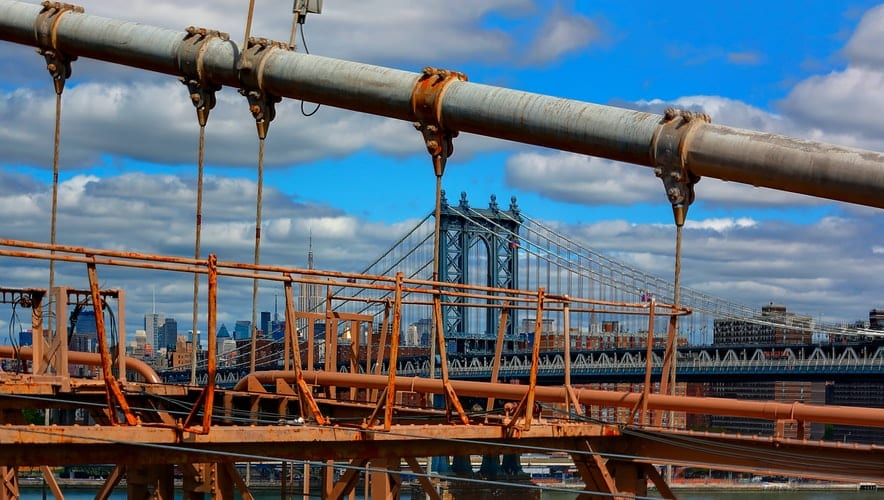Categorising corrosivity by type of environment
In a recent article, we introduced you to ISO 12944, the internationally recognised standard that provides the guidelines for the use of paint and coatings to protect assets from corrosion. The second part of the standard discusses the corrosive environment. This article introduces you to this part of ISO 12944 and the changes that were introduced in the latest revision in 2018.
What is the corrosive environment?
The corrosive environment describes the environment in which the asset to be protected is situated. There are many variables within corrosive environments. Combined, these determine how corrosive the environment is, and therefore the types of protective paint systems that are needed to help prevent corrosion (covered in part 5 of the standard).
When discussing the corrosive environment, two terms are used:
- The local environment, which describes the atmospheric conditions around a particular component
- The micro-environment, which is the environment at the interface between an element of a structure and the local environment
The environmental factors that determine an environment’s corrosivity are:
- Climate (the weather, which is established by reference to historical data)
- Atmosphere (the gases – including aerosols and particles – that surround the asset to be protected against corrosion)
The classification of environments considers temperature, relative humidity, and the time of wetness (the length of time that the metal surface is likely to be covered in a film of electrolyte that can cause atmospheric corrosion). In brief, atmospheric corrosivity calculations are made by summing the hours when the relative humidity is above 80% and the temperature is above 0°C.
Corrosivity is dependent on the corrosive agents present in the environment, especially gases such as sulphur dioxide, and salts such as chlorides and sulphates.
Types of corrosive atmospheres
When specifying the protective coatings that should be used on assets, ISO 12944 considers the type of atmosphere in which the asset is located, and categorises these from rural (away from corrosive agents such as sulphur dioxide) through to marine (where airborne salts are present).
If the asset is indoors, the potential for corrosion is usually lower because atmospheric pollutants are usually reduced. However, if the indoor asset is poorly ventilated or suffers from high humidity, then this increases the potential for condensation and, therefore, corrosion.
The categories of corrosivity are taken from a separate standard, ISO 9223;2012 – “Corrosion of metals and alloys — Corrosivity of atmospheres — Classification, determination and estimation”.
The scientific method for determining corrosion rate is determined by calculating the rate of metal loss on sample coupons (mild steel or galvanized steel) that are placed in the given environment. In practice, this is rarely performed for the determination of corrosivity for a paint specification. The corrosivity is determined by an objective estimation of the general description of the environment based on the descriptions in the standard, and the professional assessment by all parties involved in drawing up the corrosion protection specification.
Location of asset and corrosivity
When protecting assets from corrosion, ISO 12944 also considers whether the asset is in soil or water. Where assets are only partially buried in soil or partly immersed in water, the corrosion is usually localised to where the rate of corrosion can be highest.
Corrosion of assets that are immersed in water depends upon the type of water (fresh, brackish, or salt), how much oxygen is present in the water, the water’s temperature, and the substances that are dissolved in the water. There are three different ‘zones’ for corrosion, transitioning from the splash zone (wetted by spray), through intermediate (where wetting is fluctuating), to fully immersed.
Corrosion of those assets that are buried in soil depends on factors that include the minerals present in the soil and its water and oxygen content. The type of protection coating needed for buried-in-soil assets may differ along the length of the asset, because it is more likely that they will be buried in different soils – in such cases, the rate and severity of corrosion will differ.
Changes to ISO 12944 in 2018
There are three major changes in environmental categorisation as described in ISO 12944. There are now five environmental categories for onshore assets, ranging from C1 (very low corrosivity, typically in a climate-controlled indoor environment) to C5 (very high corrosivity environments, such as a coastal refinery).
A new environmental category has been introduced – the CX category, which covers offshore environments. This category is now covered in detail in a new section of the standard – part 9.
The IM categories, covering immersed assets, now include a new category (IM4) that deals with immersed assets with cathodic protection.
Key takeaways
In summary, the environment in which an asset is sited has a significant effect on the potential for it to corrode, and therefore the design of corrosion prevention system used. Factors that determine corrosivity of the environment include temperature, humidity, condensation, and corrosive pollutants in the atmosphere.
In classifying corrosion environments, ISO provides a reliable guide for the design, implementation and maintenance of structures and corrosion prevention systems and the applicable characteristics of paints and coatings that may be used.
In our next article in this series covering ISO 12944, we examine the section of the standard that deals with steel structure design. In the meantime, to learn about the Institute of Corrosion Coating and Inspection Training Courses – presented byn Argyll Ruane and Corrodere – contact us today.

